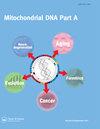泰国北部旅游洞穴中出人意料的白蛉多样性(双翅目:白蛉科)
IF 0.6
4区 生物学
Q4 GENETICS & HEREDITY
引用次数: 12
摘要
摘要白蛉(双翅目:白蛉科)是引起利什曼病的原生动物的传播媒介。白蛉在洞穴等封闭的地方繁殖。泰国是一个受欢迎的旅游目的地,包括洞穴探险等生态旅游活动,这增加了游客与白蛉接触的风险。对白蛉的监测对监测这种风险很重要,但基于形态的物种鉴定受到表型可塑性和隐性多样性的挑战。DNA条形码已被用于鉴定泰国的白蛉。我们在泰国北部的四个旅游洞穴中使用CDC捕光器采集白蛉。雌白蛉初步分类为13个形态种和19个未确定标本。从白蛉的胸部和腿部提取DNA,扩增细胞色素c氧化酶I mtDNA条形码区并测序。基于145个DNA条形码,将标本分类为22个分子操作分类单位(MOTU),明显多于形态种。根据形态物种分类,一些被认为存在于多个洞穴中的分类群分裂成洞穴特有的MOTU,可能代表了隐物种。在泰国威汉洞的早期研究中也发现了几个MOTU。这为利用DNA条形码调查泰国白蛉物种多样性及其在白蛉监测中的有用作用提供了支持。本文章由计算机程序翻译,如有差异,请以英文原文为准。
Unexpected diversity of sandflies (Diptera: Psychodidae) in tourist caves in Northern Thailand
Abstract Certain species of Phlebotomine sandflies (Diptera: Psychodidae) are vectors of the protozoa which causes leishmaniasis. Sandflies are found breeding in enclosed places like caves. Thailand is a popular tourist destination, including for ecotourism activities like caving, which increases the risk of contact between tourists and sandflies. Surveillance of sandflies is important for monitoring this risk but identification of species based on morphology is challenged by phenotypic plasticity and cryptic diversity. DNA barcodes have been used for the identification of sandflies in Thailand. We collected sandflies using CDC light trap from four tourist caves in Northern Thailand. Female sandflies were provisionally sorted into 13 morphospecies and 19 unidentified specimens. DNA was extracted from the thorax and legs of sandflies and the DNA barcode region of cytochrome c oxidase I mtDNA amplified and sequenced. The specimens were sorted into 22 molecular operational taxonomic units (MOTU) based on the 145 DNA barcodes, which is significantly more than the morphospecies. Several of the taxa thought to be present in multiple caves, based on morphospecies sorting, split into cave-specific MOTU which likely represent cryptic species. Several MOTU reported in an earlier study from Wihan Cave, Thailand, were also found in these caves. This supports the use of DNA barcodes to investigate species diversity of sandflies and their useful role in surveillance of sandflies in Thailand.
求助全文
通过发布文献求助,成功后即可免费获取论文全文。
去求助
来源期刊

Mitochondrial Dna Part a
Biochemistry, Genetics and Molecular Biology-Genetics
CiteScore
3.00
自引率
0.00%
发文量
6
期刊介绍:
Mitochondrial DNA Part A publishes original high-quality manuscripts on physical, chemical, and biochemical aspects of mtDNA and proteins involved in mtDNA metabolism, and/or interactions. Manuscripts on cytosolic and extracellular mtDNA, and on dysfunction caused by alterations in mtDNA integrity as well as methodological papers detailing novel approaches for mtDNA manipulation in vitro and in vivo are welcome. Descriptive papers on DNA sequences from mitochondrial genomes, and also analytical papers in the areas of population genetics, phylogenetics and human evolution that use mitochondrial DNA as a source of evidence for studies will be considered for publication. The Journal also considers manuscripts that examine population genetic and systematic theory that specifically address the use of mitochondrial DNA sequences, as well as papers that discuss the utility of mitochondrial DNA information in medical studies and in human evolutionary biology.
 求助内容:
求助内容: 应助结果提醒方式:
应助结果提醒方式:


